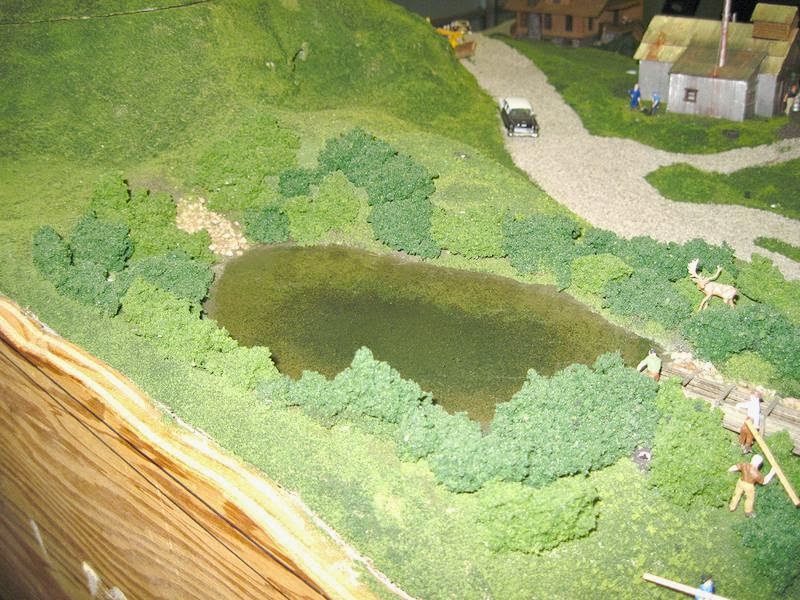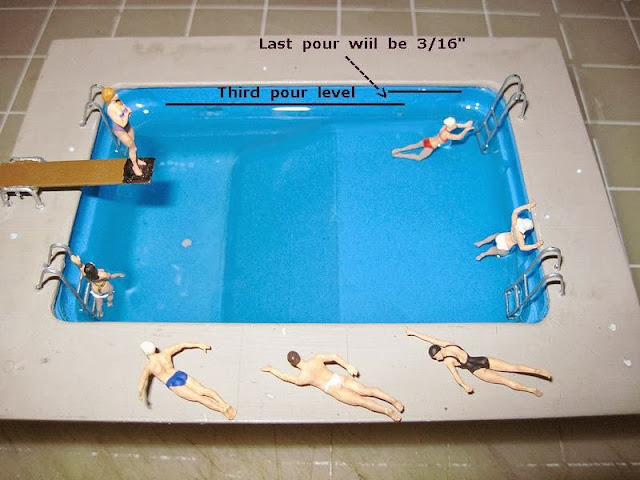Hello all! I am in need of some advice from modelers who have already taken on this task… I am preparing to pour water for a harbor and beach scene. I have a few questions before moving forward as I want to get this right the first time.
A few things to know…
-
This water will come to the edge of my layout and at the point where the styrene dam (which will be removed once water sets) and layout edge meet, it will approximately be 1.5" deep.
-
The water will be poured around bridge abutments, around trestle supports, and fade up to a beach where the water will gradually become more shallow.
-
Everything has been properly sealed, painted, leveled, and detailed to prevent leaks.
So now, what kind of water do I use? Should I use Envirotex, Woodland Scenics realistic water, Woodland Scenics Deep Pour water? How deep of a pour should I do at a time? Will there be any shrinking of the hardened water over time? Also, I will have boats, people, animals on/in the water…
Any advice, experiences, how to’s and pictures would be greatly appreciated. As always, I look forward to hearing and learning from you all. Cheers!








